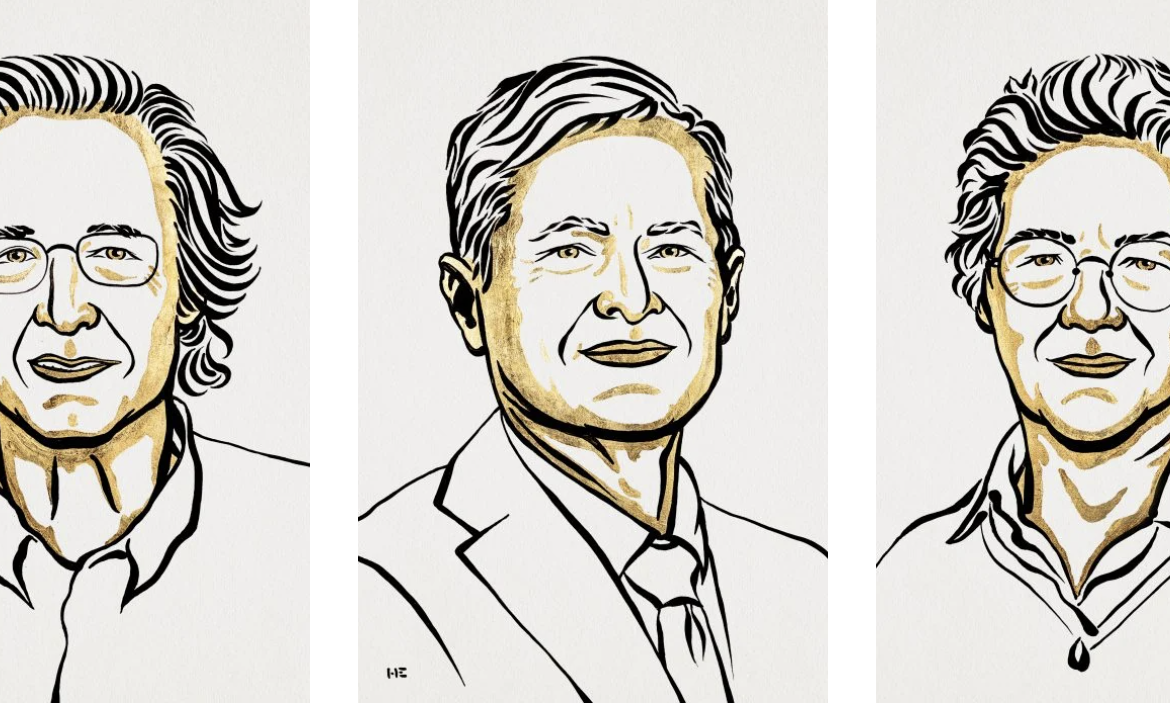
2023 Nobel Prize in Physics: Light Captures the Briefest Moments
The 2023 Nobel Prize in Physics was awarded to Pierre Agostini, Ferenc Krausz and Anne L’Huillier for their “experimental methods that generate attosecond pulses of light for the study of electron dynamics in matter”.
The reearchers showed how to generate extremely short pulses of light that can be used to measure fast processes in which electrons move or change energy.
In 1987, Anne L’Huillier discovered the appearance of many different overtones when she passed infrared laser light through an inert gas. Each overtone is characterized as a light wave with a specific sequence of cycles for each cycle of a laser light. These are the result of the laser light interacting with atoms in the gas -this gives some electrons extra energy, which is then emitted as light. Anne L’Huillier continued to work on this phenomenon and her discovery laid the foundation for subsequent breakthroughs.
In 2001, Pierre Agostini succeeded in producing and studying a sequence of consecutive pulses of light, each pulse lasting only 250 attoseconds. Around the same time, Ferenc Krausz was working on another experiment and he was able to isolate a single pulse of light lasting 650 attoseconds.
The work of this year’s laureates has made it possible to study extremely fast processes that were previously impossible to follow.
When fast-moving events are observed, they appear as a movie made up of a series of images stitched together and completely still. If we really want to study short-term events, we need special technology. In the electron world, changes occur in tenths of an attosecond -an attosecond is so short that a second includes as many attoseconds as there have been seconds since the universe was born.
Experiments of the laureates have produced pulses of light so short that they can be measured in attoseconds, showing that these pulses can be used to provide images of processes inside atoms and molecules.
Inside the atoms and molecules, electrons travel at extremely high speeds. Capturing their motion is only possible via extremely short pulses of light. This is similar to a camera flash that lasts only attoseconds, or billionth of a billionth of a billionth of a second.
Think of a propeller spinning at high speed. To the naked eye, each blade looks blurry. But if you shine a rapidly flashing flash at the propeller, each flash will illuminate a moment frozen in time. As the flashes get shorter, more information about the propeller is revealed.
Scientists used this technique to examine the behaviour of electrons inside atoms and molecules. The technique also reveals the behaviour of molecules. You may think of many applications for it; from understanding why some materials are superconductors at high temperatures, to photovoltaic applications, and to harvesting energy from light.
Eva Olsson, Chair of the Physics Nobel Committee, said: “We can now open the door to the world of electrons. Attosecond physics gives us the opportunity to understand mechanisms that are governed by electrons. The next step will be utilising them.”
REFERENCES
- 1. https://www.nobelprize.org/prizes/physics/2023/press-release/
- 2. https://www.sciencenews.org/article/technique-ultrafast-electrons-2023-physics-nobel
